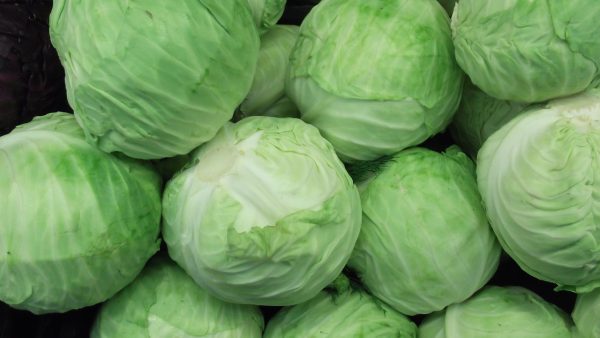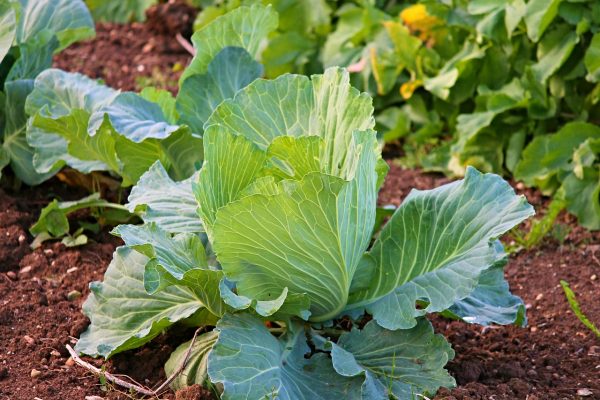| Botanical Name | Brassica oleracea var. capitata |
| Plant Type | Vegetable |
| Family | Brassica |
| Time to Plant Seeds | 6-8 weeks before frost of spring |
| Soil Type | Fertile |
| Soil Condition | Well-drained |
| Soil PH | Above 6.8 |
| Sun Exposure | Light shades |
| Temperature | Cool |
| Water Supply | Frequently |
| Organic Matter | Compost and aged manure |
| Fertilizers | Prefer Organic matter |
Cabbage is a delicious vegetable to eat and a cool weather crop belongs to the Brassica family. In this article, we will explain all basic and essential steps for growing cabbage plant. You will learn from all beginner to advanced techniques in this article. We will explain in detail all fundamental conditions and various requirements for growing cabbage to obtain best quality crop. Which is the best time to plant cabbage so that we can have a maximum and healthiest crop? We will cover step by step how to plant cabbage? How to grow cabbage plant and maintain appropriate conditions? How to care for the crop from harmful climate effects and pests. This article will further elaborate, when and how to harvest your crops?

If you are a beginner gardener then you should add this beneficial crop into your grocery list. Nature has filled this with numerous advantageous nutrients that protect the human body from many diseases. It protects from heart disease and decreases the risk of blood pressure. Furthermore, it lowers cholesterol levels. So it is worthy to grow your own cabbage crop. If you are a beginner and totally unfamiliar about how to grow cabbage then you should read this complete article. After reading this article, you will be capable to identify appropriate time and grow this crop like proficient gardeners.
Conditions for growing cabbage
One of the most important steps for growing any crop is to learn suitable conditions and necessary requirements. For example, if the best suitable temperature for growing any crop is 70 F and you are planting that at 30 F then definitely your crop will not be up to the mark. Therefore, you must be familiar with the appropriate conditions.
Cabbage is a leafy vegetable and it likes cool temperature. Although it can tolerate full sun, in extremely hot climates, it requires light shades. Although direct sunlight is not necessary for starting days when the plant starts flowering and seeding then it becomes necessary. If you belong to a warm climate then you should buy a few shades to protect the crop.
After selecting the right spot for planting cabbage, prepare your soil best for good production. Soil should be well-drained and fertile. You can increase your production by mixing different organic compound into the soil. Add well-rotted compost and aged manure into the soil. Try to avoid using fresh manure because it can be a cause of diseases sometimes. Do not grow any vegetable which belongs to the same family of cabbage, for example, cauliflower and broccoli. These are good feeders and requires enough nutrients. Therefore, cabbage doesn’t grow well near its own family members.
When to plant cabbage?
Plantation time can vary region to region for planting cabbage. Roughly, in your era, 6 to 8 weeks before the last frost of spring you should plant the seeds of cabbage indoors. When 5 to 6 weeks pass away, transplant the seedlings of cabbage plant outdoors. Now, let’s learn how to plant cabbage?
How to plant cabbage?
Till now, you are familiar with all the necessary conditions for planting cabbage. You have learned about the best time and soil preparation for growing the cabbage. Now, let’s move toward our central point of discussion on how to plant cabbage?
- First of all, decide carefully whether you want to grow cabbage by seeds or seedlings. If you want to grow seedlings, then you can buy these from nurseries beside your gardens. Otherwise, you can grow the cabbage by the seeds.
- At least 6 to 8 weeks before the last frost, sow the seeds indoors for transplanting.
- Select a partial sunny place where it can have full sun for a few hours (Sunlight is required when cabbage start growing flowers and seeds).
- Prepare your soil. Soil should be well-drained and fertile. Mix different organic compound like compost and manure with the soil.
- You can transplant after 5 to 6 weeks when seedlings become a few inches tall.
- Before transplanting, start hardening your plant at least one week before.
- Transplant the cabbage at least 12 to 24 inches apart in a row. Cabbage grows in a large size. If your distance is smaller between two seedlings then cabbage will be smaller.
- Add mulch to retain moisture and regulate the temperature of the soil.

How to grow cabbage plant and how to care?
Just planting cabbage is not a big deal. You are just one step apart from harvesting. You can’t achieve your desired target until you care for your crop. You should maintain its desired climate and water the crop according to its needs. Let’s learn how to grow cabbage plant and which step you should take to protect your crop from pests and relatively high temperature.
- Try to maintain an appropriate distance between two cabbage plants. Don’t throw away uprooted seedlings. Try to plant it elsewhere in your garden.
- Never grow any other vegetable or tomatoes beside this crop.
- Fertilize the crop after three weeks.
- Water the crop frequently. Try to avoid waterlogging.
- Remove the soil acidity otherwise a disease called club root will harm your crop. So keep your soil pH above from 6.8.
- You can plant Dill beside your cabbage crop. It attracts beneficial wasps that kill cabbage worms.
- You should weed the crop regularly so that your crop can have essential nutrients for their best growth.
When and how to harvest cabbage?
Harvesting cabbage is a last step. If you grow your crops according their appropriate conditions then you will obtain best quality yield. You can start harvesting when cabbage heads reach their desired size. After transplanting, these will take approximately 70 days for their mature growth. Cut the heads with a sharp knife. After harvesting, immediately put them under the shades. If you want to make cabbage salad, then you should cut the cabbage heads before they reach their desired size and firm. These small cabbage heads will be perfect for salad. You should store the cabbage no more than two weeks.

